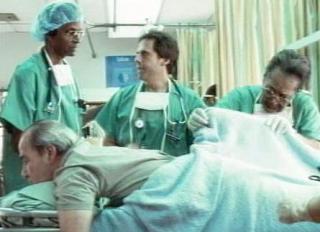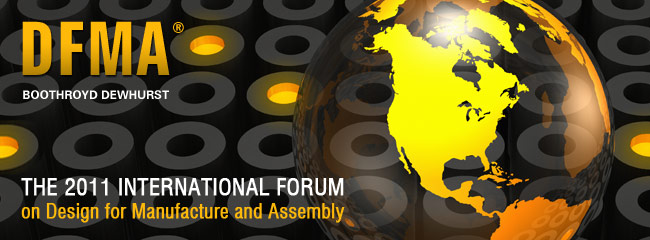Archive for the ‘Bottom Line Growth’ Category
Secret Sauce that Doubles Profits
 Last month a group of engineers met secretly to reinvent the US economy one company at a time. Here are some of the players, maybe you’ve heard of them:
Last month a group of engineers met secretly to reinvent the US economy one company at a time. Here are some of the players, maybe you’ve heard of them:
Alcoa, BAE, Boeing, Bose, Covidien, EMC, GE Medical, GE Transportation, Grundfos, ITT, Medrad, Medtronic, Microsoft, Motorola, Pratt & Whitney, Raytheon, Samsung, Schneider Electric, Siemens, United Technologies, Westinghouse, Whirlpool.
Presenter after presenter the themes were the same: double profits, faster time to market, and better products – the triple crown of product development. Magic in a bottle, and still the best kept secret of the product development community. (No sense sharing the secret sauce when you can have it all for yourself.)
Microsoft used the secret sauce to increase profits of their hardware business by $75 million; Boeing recently elevated the secret methodology to the level of lean. Yet it’s still a secret.
What is this sauce that doubles profits without increasing sales? (That’s right, doubles.) What is this magic that decreases time to market? That reduces engineering documentation? That reduces design work itself? What is this growth strategy?
When trying to spread it on your company there are some obstacles, but the benefits should be enough to carry the day. First off, the secret sauce isn’t new, but double the profits should be enough to take a first bite. Second, its name doesn’t roll off the tongue (there’s no sizzle), but decreased time to market should justify a taste test. Last, design engineering must change its behavior (we don’t like to do that), but improved product functionality should be enough to convince engineering to swallow.
There are also two mapping problems: First, the sauce has been mapped to the wrong organization – instead of engineering it’s mapped to manufacturing, a group that, by definition, cannot do the work. (Only engineering can change the design.) Second, the sauce is mapped to the wrong word – instead of profit it’s mapped to cost. Engineering is praised for increased profits (higher function generates higher profits) and manufacturing is responsible for cost – those are the rules.
With double profits, reduced time to market, and improved product function, the name shouldn’t matter. But if you must know, its name is Design for Manufacturing and Assembly (DFMA), though I prefer to call it the secret sauce that doubles profits, reduces time to market, and improves product function.
Money out the wazoo
 There’s a huge untapped source of profits out there – a virtual gold mine – with profit opportunities so large you can’t see them, and if you do see them, too large to believe. These profits larger than you’ve achieved with your traditional lean work. (Actually, what I’m talking about the next evolution of lean.) Want to see what I’m talking about? Go to your factory and watch. The gold mine will be hiding in plain sight – it’s your product.
There’s a huge untapped source of profits out there – a virtual gold mine – with profit opportunities so large you can’t see them, and if you do see them, too large to believe. These profits larger than you’ve achieved with your traditional lean work. (Actually, what I’m talking about the next evolution of lean.) Want to see what I’m talking about? Go to your factory and watch. The gold mine will be hiding in plain sight – it’s your product.
Huge savings blah, blah, blah. How significant? Here’s the formula:
material cost x volume x 50%.
Now, for your highest volume product, do the calculation. Go ahead. Do it. Humor me. It’s worth it.
Go get your best pen, and calculate by hand. Write down the number. Go ahead. Write it down, but make sure you put the dollar sign in front, and, please, put in the commas. Don’t abbreviate thousands, millions, or billions (or trillions, Mr. Gates) – write the zeros. All of them.
There. You did it. Not so hard. Now, sit quietly, and contemplate the number. Look at it for an hour. Don’t say anything, just sit with it.
Now, get bigger piece of paper, and re-run the calculation, but this time write big. Repeat with a poster board, and finish with your biggest whiteboard – big zeros, lot’s of them. (Don’t forget the commas.) Marinate for an hour. Don’t say anything, just sit.
Now that you appreciate the significance of the number, go make something happen. If you’re a CEO, tell your engineering leader to do DFMA; if you’re the manufacturing leader, grab your engineering leader by the ear, and walk to the whiteboard; if you’re the engineering leader, do DFMA.
You likely don’t believe the number. I know. It’s okay. But, a number that big at least deserves a Google search: save 50% with DFMA.
Upcoming Workshop on Systematic DFMA Deployment
 I will be running a half-day workshop on Systematic DFMA Deployment on June 13 in Providence, RI. The workshop will kick of BDI’s 2011 International Forum on Design for Manufacturing and Assembly and will focus on how to incorporate DFMA into your product development process.
I will be running a half-day workshop on Systematic DFMA Deployment on June 13 in Providence, RI. The workshop will kick of BDI’s 2011 International Forum on Design for Manufacturing and Assembly and will focus on how to incorporate DFMA into your product development process.
The Forum (June 14, 15) is the yearly gathering of the world’s leading DFMA experts. It is THE place to learn about DFMA and see examples and results from leading companies.
I urge the product development community to attend.
I am also presenting at the Forum and hope to finally meet you in person.
Out of the recession — top line or bottom line approach?
 I have been watching the news and listening to the pundits, and, apparently, we are steaming out of the great recession and the manufacturing flywheel is nearing full speed.
I have been watching the news and listening to the pundits, and, apparently, we are steaming out of the great recession and the manufacturing flywheel is nearing full speed.
As we all know, that’s a bunch of crap. Many manufactures are still in survival mode where cost cutting has crossed into the ridiculous; where the best talent has been cut; and where the product development flywheel is motionless. We are far from coming out of this thing, and the bad stuff we had to do to survive will take time to undo.
However, some companies are considering options to accelerate themselves out of the soup. They are asking the big question – what is the fastest way out?
To me, the fastest way out is all about three things: product, product, product — do you have the right products coming to market? Or, if not, how can you get your product development flywheel moving so the right products hit the market as quickly as possible? But, what are the attributes of the “right product”?
I think there are two components of the right product: the top line component and the bottom line component. The top line component (which drives top line growth) is all about function and features. More function equals increased sales through market share and price. The bottom line component (bottom line growth) is all about cost. Pretty basic. But, if your resources are limited (like most of us) and can improve only one, which should you improve?
Bottom line cost reduction is not glamorous, but the balance sheet improvment is surprisingly good. Let me give an example. Product A is an existing product that sells for $1000 and it costs you $800 to produce, providing $200 profit per unit. You spend your product development resources on a bottom line effort and reduce product cost by 20%. Still selling for $1000 but with a cost of $640 (0.8 * $800), profit dollars increase by 80% ($360 vs. $200). Not bad especially since sales have not increased.
Top line growth has a strong emotional component which energizes people, and the upside potential is huge. Here is an example using the same product as above. Product A still sells for $1000, costs you $800, and you make $200 per unit. You spend your product development resources on a top line project to add better functionality and more features. Because you don’t have time to address the bottom line component, your costs go up 10% (to $880). But, you do get the function and features you wanted, and the market can support a 10% price increase to $1100. Profit per unit is up 10% t0 $220 ($1100 – $880). Your engineering really came through and the market likes your new product and sales increase by 20%. With all that, profit dollars increase by 32% ($220*1.2 = $264 vs. $200).
Clearly the examples are contrived to illustrate a point: bottom line cost reduction is powerful and so are top line sales growth and price increase. And the best answer is not to choose between top line and bottom line components. It makes a lot of sense to do a little of both, because it’s the fastest way out of the soup.
 Mike Shipulski
Mike Shipulski